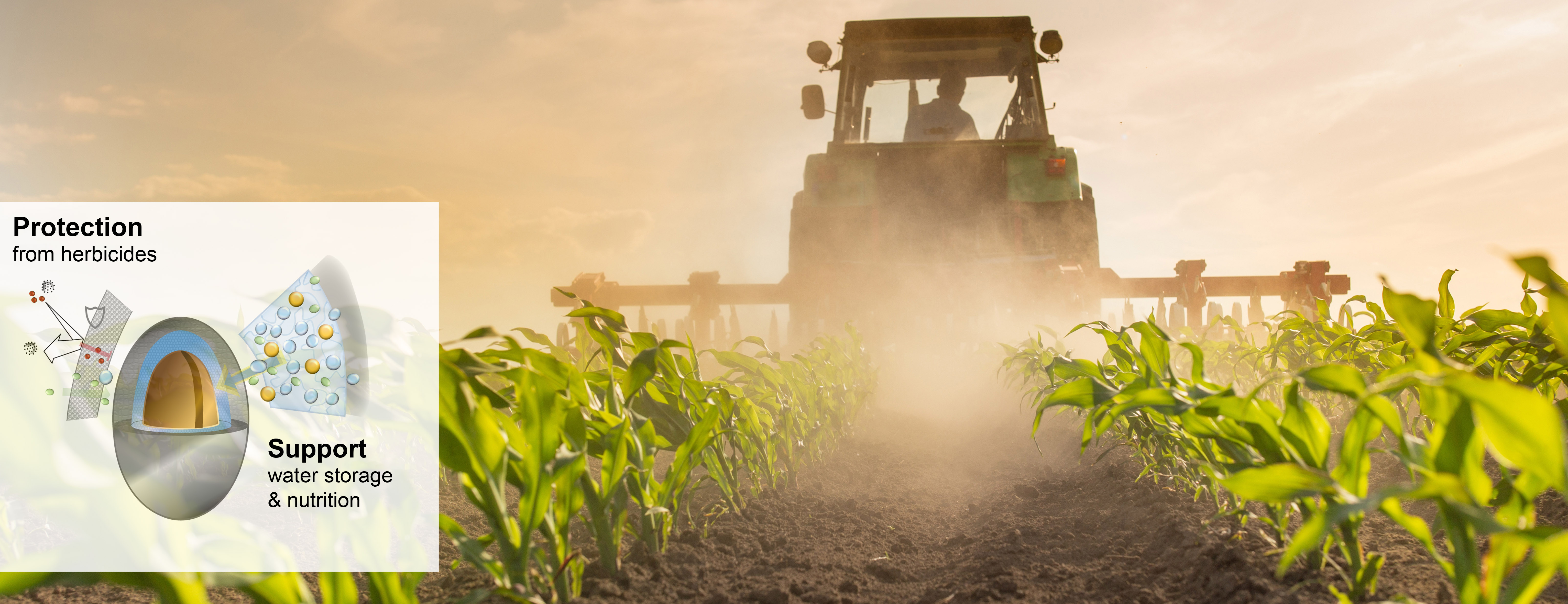We developed the SeedPlus technology in an internal Fraunhofer PREPARE project, it offers the following key benefits:
1. Optimized germination conditions and higher yields
SeedPlus improves germination conditions through targeted water release and effective protection against pollutants. These optimized growth conditions contribute to increased resistance, especially in the early stages of plant development. The improved nutrient and water supply leads to robust crop establishment, resulting in more consistent and higher yields, increasing the efficiency of agricultural production.
2. Reduced use of chemical pesticides
The integrated herbicide protection mechanism in SeedPlus creates a selective barrier for the seedling. The advantage of this protection lies in the joint and precise application of emergence herbicides and water exclusively in the seed row, which makes the new SeedPlus seeding technology resource-saving, economically viable and, above all, more environmentally friendly. This not only has a positive impact on the environment by minimizing soil and water pollution, but also contributes to the long-term preservation of soil fertility and the promotion of a healthy agricultural ecosystem. In addition, a reduction in chemical inputs can help reduce weed resistance.
3. High scalability and application flexibility
A key advantage of the SeedPlus technology is its adaptability to different seed types and sizes. It can therefore be used in a variety of agricultural sectors and can be tailored to individual needs. In addition, SeedPlus technology enables efficient mass production, making it economically attractive for large acreages.
4. Focus on sustainability and environmental friendliness
SeedPlus uses environmentally friendly materials that are fully biodegradable. This minimizes the impact on agricultural land and adjacent ecosystems. The sustainable design of this seed technology therefore makes a significant contribution to reducing environmental impact and supporting sustainable agriculture.
SeedPlus combines technological efficiency and ecological responsibility to create an innovative solution for modern agriculture. The technology offers economic and environmental benefits and can help meet the challenges of sustainable food production. SeedPlus - for future-proof agriculture
 Fraunhofer Institute for Molecular Biology and Applied Ecology IME
Fraunhofer Institute for Molecular Biology and Applied Ecology IME